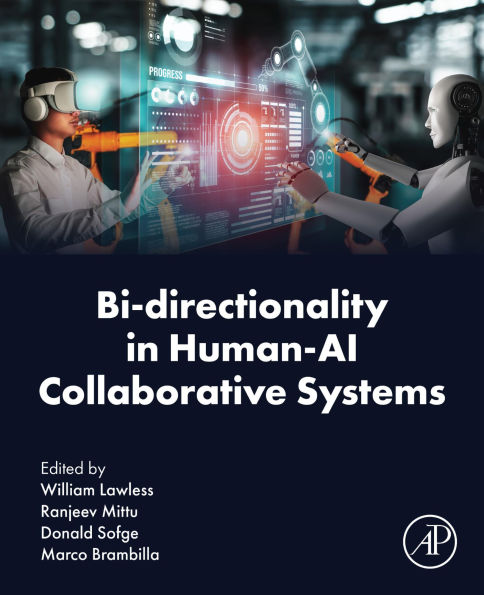Bi-directionality in Human-AI Collaborative Systems investigates the foundations, metrics, and applications of human-machine systems, along with the legal ramifications of autonomy, including standards, trust by the public, and bidirectional trust by users and AI systems. The book addresses the challenges in creating synergistic human and AI-based autonomous system-of-systems by focusing on the underlying challenges associated with bi-directionality. Chapters cover advances in LLMs, logic, machine learning choices, the development of standards, as well as human-centered approaches to autonomous human-machine teams. This is a valuable resource for world-class researchers and engineers who are theorizing on, designing, and developing autonomous systems.It will also be useful for government scientists, business leaders, social scientists, philosophers, regulators and legal experts interested in the impact of autonomous human-machine teams and systems. - Investigates the challenges in creating synergistic human and AI-based autonomous system-of-systems - Integrates concepts from a wide range of disciplines, including applied and theoretical AI, quantum mechanics, social sciences, and systems engineering - Presents debates, models, and concepts of mutual dependency for autonomous human-machine teams, challenging assumptions across AI, systems engineering, data science, and quantum mechanics
1146579829
Bi-directionality in Human-AI Collaborative Systems
Bi-directionality in Human-AI Collaborative Systems investigates the foundations, metrics, and applications of human-machine systems, along with the legal ramifications of autonomy, including standards, trust by the public, and bidirectional trust by users and AI systems. The book addresses the challenges in creating synergistic human and AI-based autonomous system-of-systems by focusing on the underlying challenges associated with bi-directionality. Chapters cover advances in LLMs, logic, machine learning choices, the development of standards, as well as human-centered approaches to autonomous human-machine teams. This is a valuable resource for world-class researchers and engineers who are theorizing on, designing, and developing autonomous systems.It will also be useful for government scientists, business leaders, social scientists, philosophers, regulators and legal experts interested in the impact of autonomous human-machine teams and systems. - Investigates the challenges in creating synergistic human and AI-based autonomous system-of-systems - Integrates concepts from a wide range of disciplines, including applied and theoretical AI, quantum mechanics, social sciences, and systems engineering - Presents debates, models, and concepts of mutual dependency for autonomous human-machine teams, challenging assumptions across AI, systems engineering, data science, and quantum mechanics
180.0
In Stock
5
1

Bi-directionality in Human-AI Collaborative Systems
300
Bi-directionality in Human-AI Collaborative Systems
300Related collections and offers
180.0
In Stock

Product Details
| ISBN-13: | 9780443405549 |
|---|---|
| Publisher: | Elsevier Science & Technology Books |
| Publication date: | 06/11/2025 |
| Sold by: | Barnes & Noble |
| Format: | eBook |
| Pages: | 300 |
| File size: | 46 MB |
| Note: | This product may take a few minutes to download. |
About the Author
From the B&N Reads Blog
